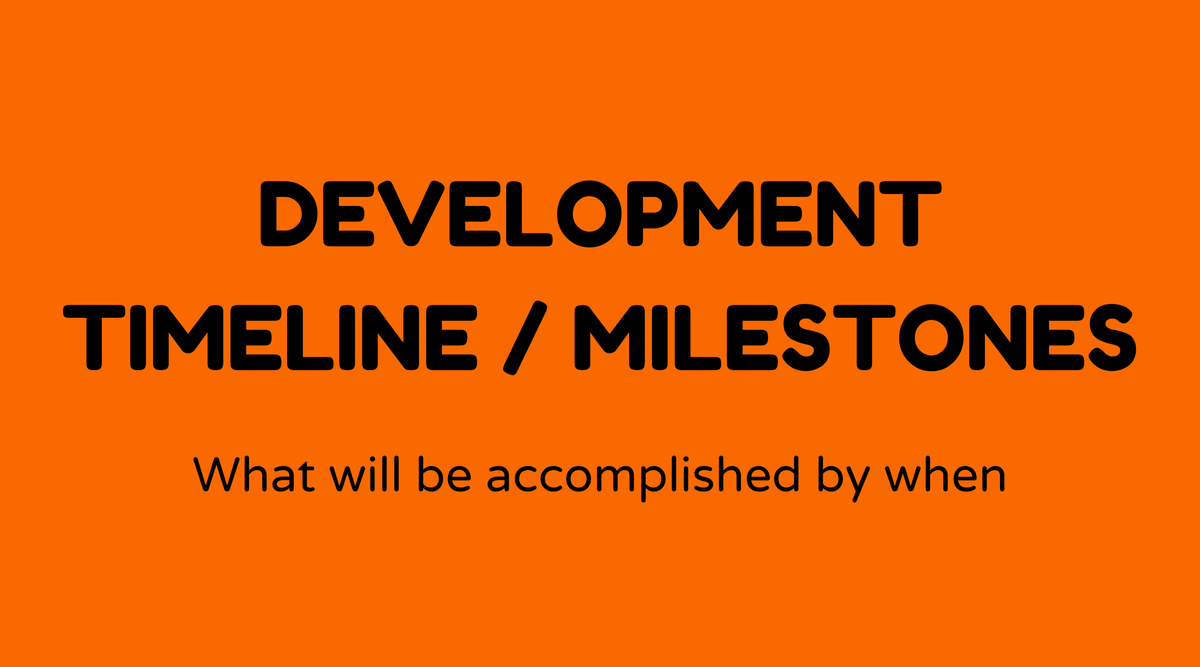Development milestones / timelines

Overview of Key Stages / Schedules:
Grasping key stages and schedules is essential in project management. These stages function as checkpoints that allow teams to monitor progress and make necessary adjustments. But, what exactly is the importance of these concepts in a project environment?
Why Key Stages / Schedules Matter:
Key stages are vital in providing structure and focus to a project. They assist organizers and team members in tracking progress while also aiding in resource distribution, risk assessment, and communication. Having a clearly defined schedule ensures that everyone involved understands what to anticipate and when. This reduces misunderstandings and aligns efforts towards a shared objective.
Schedules, conversely, are the comprehensive outlines that encompass all project activities and their respective deadlines. Together, key stages and schedules ensure that projects are completed on time and within scope, without compromising quality.
What are Key Stages / Schedules:
A key stage refers to a significant point within a project lifecycle that denotes the completion of a major phase or deliverable. It’s a measurable and tangible target that serves as a landmark toward the project's final objectives. Key stages are often critical and play an essential role in project assessments and approvals.
Schedules are essentially the chronological sequence of operations and events that outline when key stages should be achieved. They represent the roadmap of a project, dictating the pace at which the project will advance.
How to Establish Key Stages / Schedules:
Creating effective key stages and schedules involves several steps:
- Identify Major Deliverables: Determine what must be accomplished at each phase.
- Outline the Project Scope: Clearly define what the project aims to achieve.
- Establish Key Stages: Decide on significant points of progress.
- Set Deadlines: Assign realistic timelines for each key stage.
- Prioritize Tasks: Ensure that the most critical objectives are addressed first.
- Monitor and Adjust: Regularly review progress and make necessary modifications to the schedule.
Examples of Key Stages / Schedules:
- Product Development: In the software sector, a development schedule might include key stages for completing the design phase, a functional prototype, user testing, and the final product launch.
- Construction Projects: Key stages could include obtaining permits, completing the structural framework, and finishing interior design.
- Marketing Campaign: Important stages might be strategy approval, content completion, and launch dates.
FAQs
-
What is the purpose of key stages?
They assist in tracking progress, managing resources, and addressing risks by marking significant points within a project. -
How frequently should key stages be set?
This depends on the project scope and duration. For long-term projects, major stages could be scheduled monthly or quarterly. -
Can key stages adjust?
Yes, but changes should be thoughtfully considered and communicated to all stakeholders involved. -
What tools assist in managing key stages and schedules?
Tools like Trello, Asana, and Microsoft Project are popular for tracking and managing project schedules and key stages. -
How do you handle missed key stages?
Analyze the reason for the delay, reassess project plans, and communicate changes to relevant parties to realign efforts. -
What's the difference between key stages and goals?
Key stages are tangible targets marking progress, while goals are the ultimate desired outcomes of a project.



